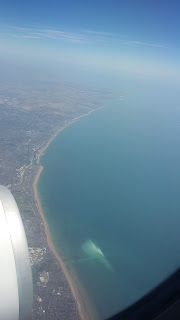Brighton and The English Channel
Brighton is located directly south of London and is officially a city (designated in 2000). Brighton and Hove (the name of the city) is located on the English Channel with a very long coastal path which varies in width along its length. Brighton is relatively easy to access, despite the nearest motorway being the M23 more than 15 miles away. As the A23 provides good access to the north and the A27 to the east and west. Brighton is also easy to access by train with the Brighton main line ending at Brighton from central London. Brighton is also served by the east and west coastway lines which provide access to other towns along the coast.

Brighton Pavilion Constituency
Brighton Pavilion parliamentary constituency covers a significant section of Brighton including the pier and is special because its constituents elected the only Green MP. Caroline Lucas has been their MP since the 2010 General Election and her vote share in the subsequent General Elections has substantially increased from 31.3% in 2010 to 57.2% in 2019.
The Piers
Brighton used to have two major piers: the West Pier and the Palace Pier. With the Palace Pier being renamed to Brighton Pier in 2000, but the new name of the Palace Pier has not been recognised by everyone with the local newspaper and Google Maps using the old name. The past tense “used” is important as the West Pier is a Grade I listed structure which is currently a partial framework of metal. A Grade I listed building is of exceptional interest and unauthorised changes to the building can face criminal prosecution.

The West Pier
The West Pier opened in 1866, had its heyday in 1918 with 2 million visitors, and closed to the public in 1975. After its closure the pier slowly fell into disrepair with the walkway to the end removed in 1991 for safety reasons. The demise of the pier accelerated in 2002 with a large storm and further in 2003 with two fires (thought to be arson) ravenging the remains. It is currently thought that the pier, despite being Grade I listed, is beyond repair and its skeleton lies black and derelict just off Brighton beach.
Wind Farms

The south coast of England has a massive wind farm with several hundreds of turbines providing green power to the UK. This wind farm is definitely not the only offshore wind farm in the UK with many farms across the country taking advantage of our unusually windy climate. But wind power is inherently unpredictable and the quantity of power generated constantly varies. This variation is not inline with the variation in electricity demand so alternative power generation sources are needed which usually produce carbon dioxide. This is essentially one of the big issues with the world's journey to decarbonise its power grid.



Comments
Post a Comment